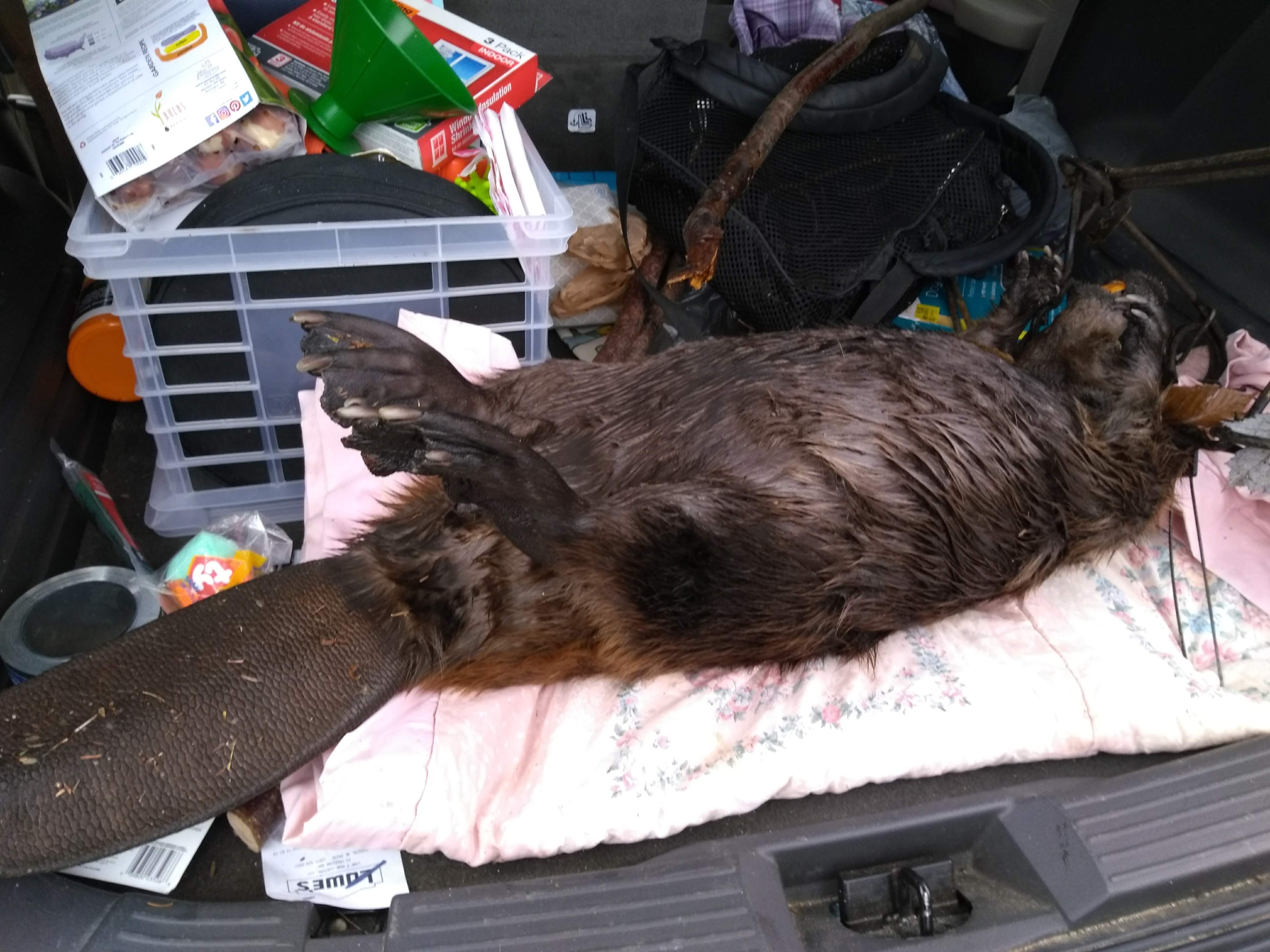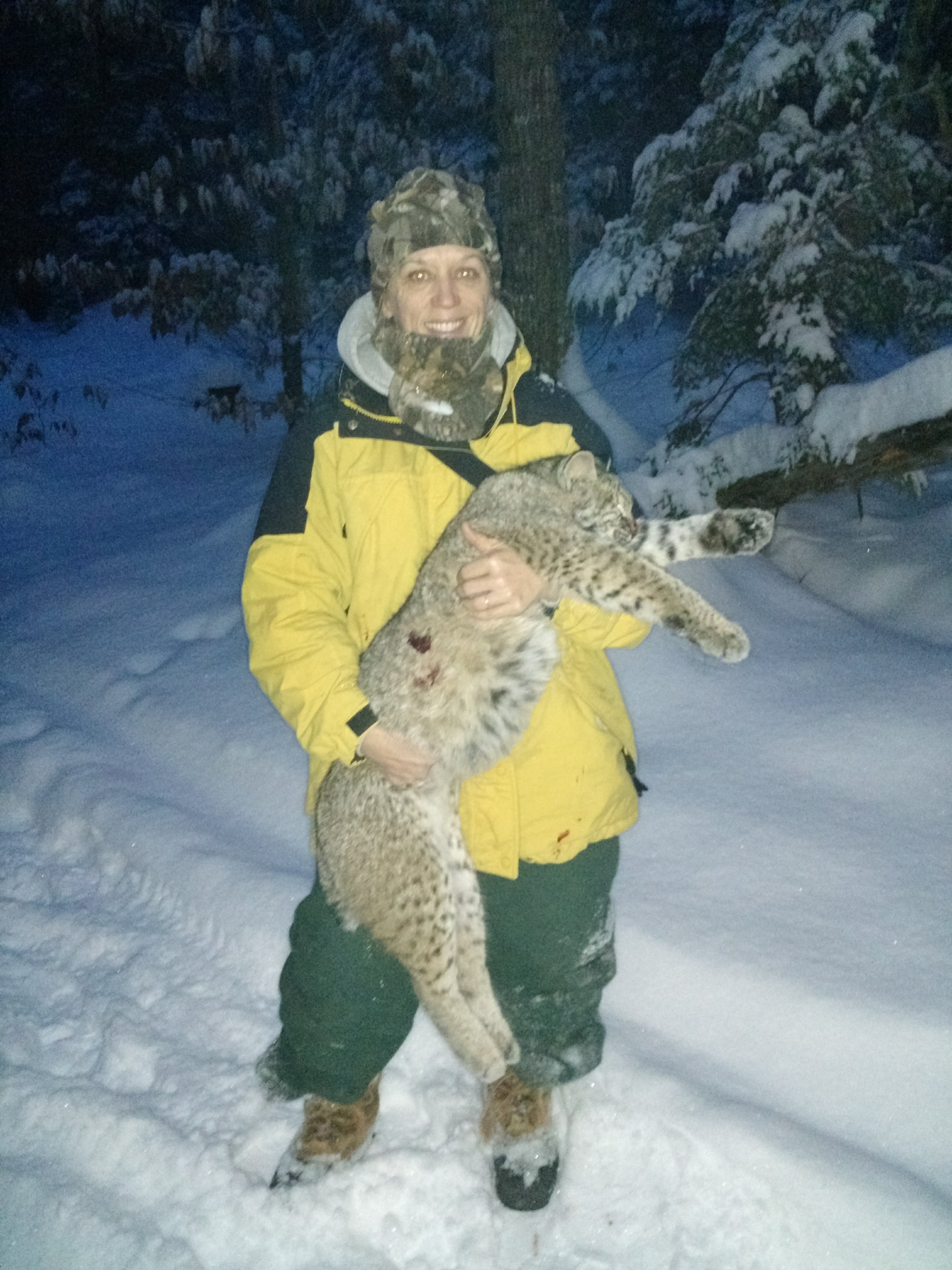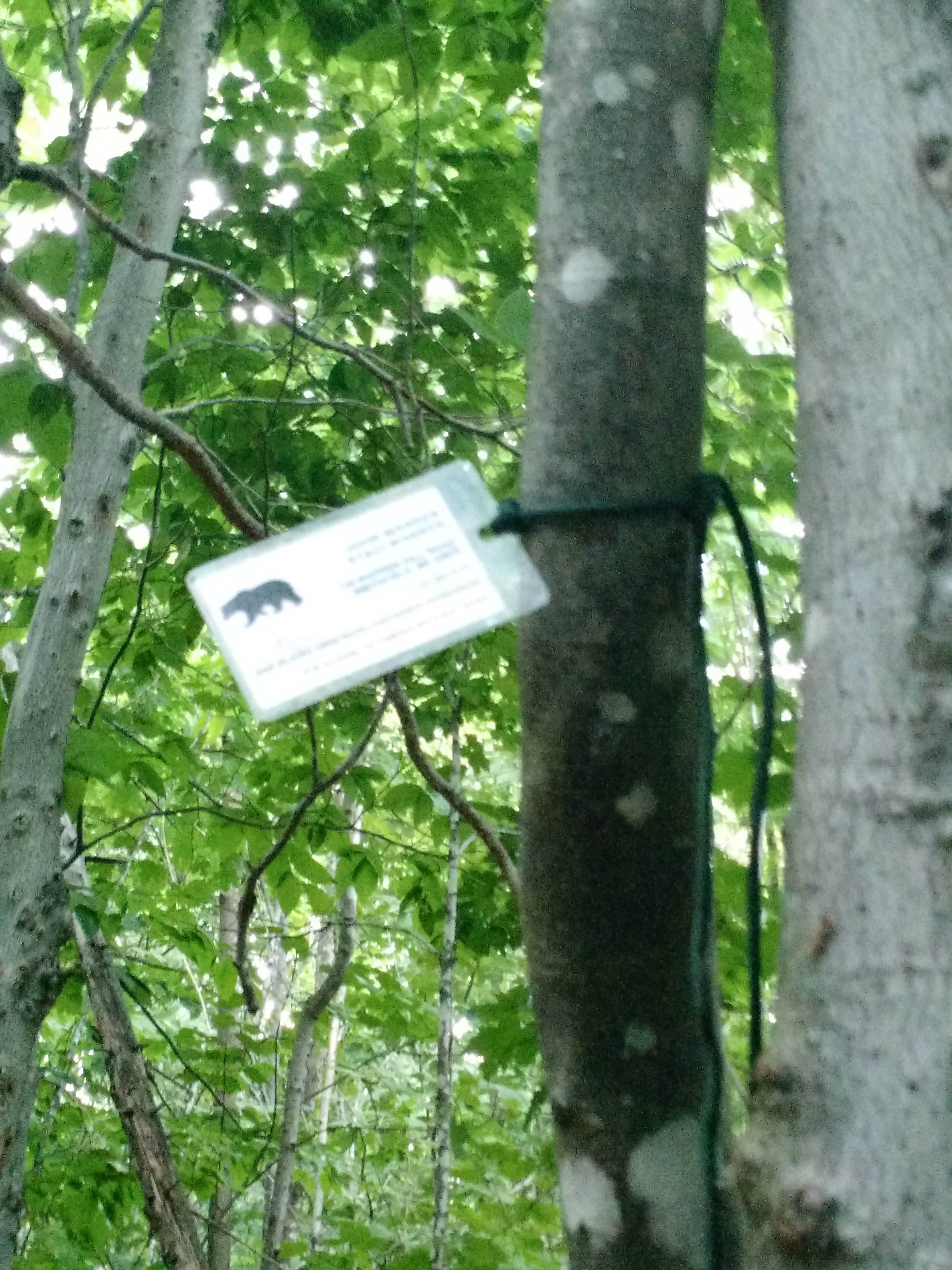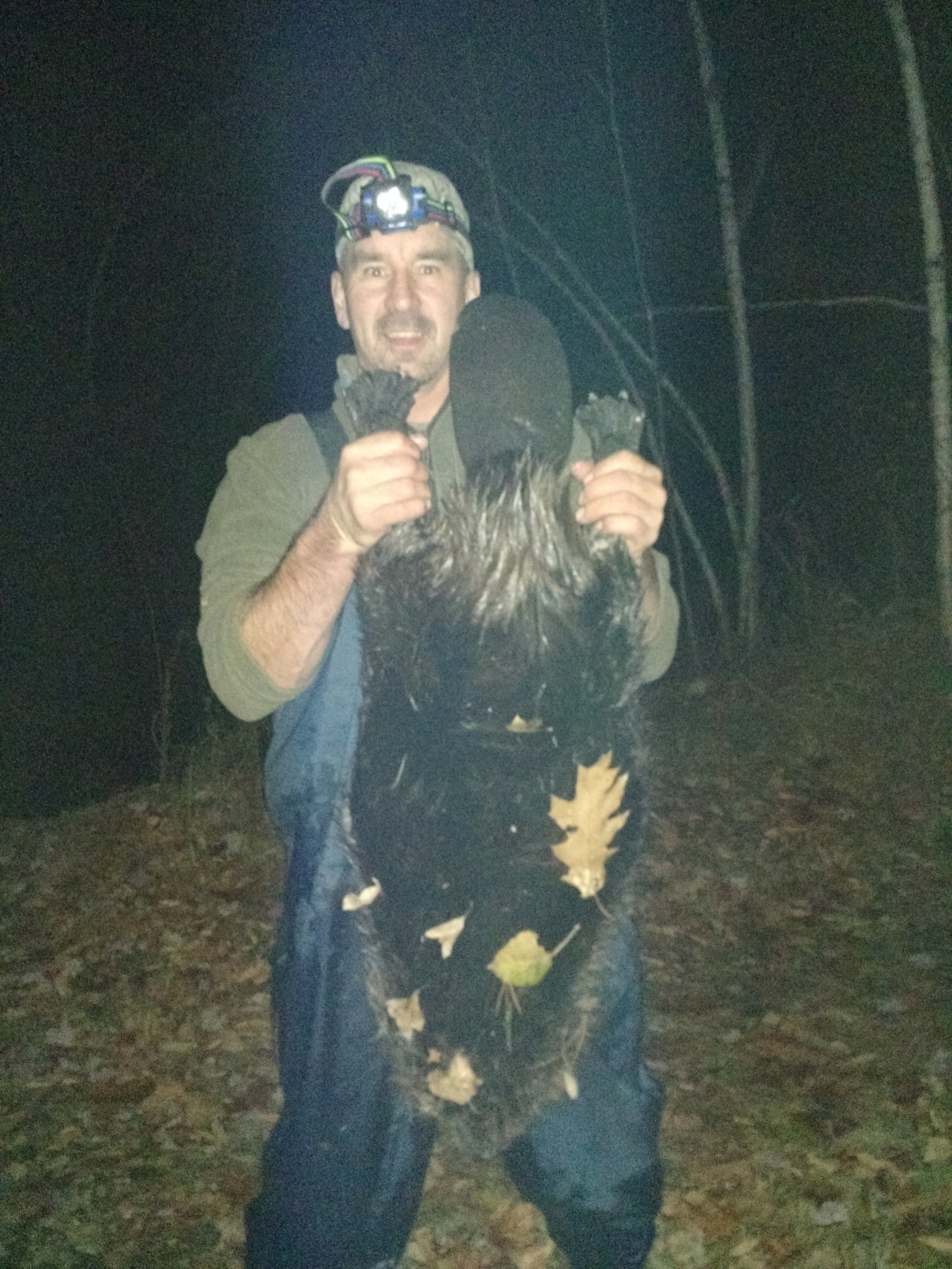We always hear that we need to remove food for bear when it starts to warm up and they start raiding bird feeders. Many people don’t even know what bear like to eat. Bear are omnivores with means they survive by eating plants and animals. Bear don’t eat just honey and they will kill other animals if they want to eat it.
Bear are one of the biggest predators to deer fawn and moose calves born each spring. Bear compete with other predators such as coyote and bobcat, which also kill deer and moose calves. Source
When bear come out of their dens, most often, there isn’t even green grass, let alone abundant berries, nuts, or other goodies to eat, which is what drives them to take advantage of what’s available. That means if they live in your woods, they’ll raid bird feeders, bee hives, chicken coops, grain barrels, and garbage bins, if given the opportunity.
Bear also take advantage of roadkill, called carrion, which is why motorists may get a chance to see bear roadside in the spring. Just think of how much road kill you can see in one trip down the turnpike: deer, ground hog, raccoon, beaver, porcupine, turkey, and fox, just for starters. Bear love beaver, which has been referred to as “bear caviar” or “bear coke”, but I’ve never heard of bear specifically hunting beaver as a source of food. Beaver have some pretty nasty teeth, so most likely, it would be road kill. We actually have used beaver as a scent attractant when we initially set bait for bear hunting. It works.
A bear’s incredible sense of smell will bring them into neighborhoods and populated areas not usually frequented once natural food is available. Since I am fortunate enough to not get bear in my backyard, I have to go looking elsewhere.

In our travels, primarily on paper company owned land, I’m always looking for signs of bear activity. In all the time we’ve spent in the woods and driving roads, we’ve only seen a bear three times, all at dusk, and only glimpses, because once they see you coming, they usually are gone in a flash of black.
I truly love to see the signs of bear in our travels. You don’t need a game camera to find where bear are hanging out. When traveling roads, you can also spot signs. We often get out and inspect what we find. I love to take pictures and talk with the kids about what the bear might have been eating or doing when it was there. This is also a great way to break up a long ride. Most of the time, bear sign is all around, but you’ll miss it if you don’t know what to look for. So here’s a run down of what to look for:
1. Bear scat, in the road…Yes, bear poop in the road, not necessarily always in the middle. Poop in early spring is usually very black and consists of grass that has just sprouted. This is also a way for boars to mark their territory. Since spring is the beginning of mating season for bear, this is just another calling card.

2. Rocks that have been rolled out of their spots. You can usually spot when a rock has been overturned. I have scoured my files, and despite knowing I’ve taken pictures of rocks, I can’t find one. But trust me…just picture good sized rocks overturned and ants crawling about. To make up for it, here’s more poop pictures.
3. Logs and other debris in the woods and in older wood yards. These are our biggest finds, and we often find bear claw marks on the wood. Bear rely on insects as an important part of their diet throughout the year, but spring is when ants provide them the food they need.




4. We’ll find bear tracks in the dirt if we’re really lucky. Nothing to me is more fun than spotting tracks. Which one is it? Front foot? Back foot? The size of the track compared to your hand is a great photo opportunity. ‘


And finally…claw marks on trees. Some of the trees were visited long ago and the tree has started to grow, while others are freshly carved. Any way I look at these, they’re all wicked cool.



I hope this will give you a chance to find your own bear sign. Get out of that truck and take a look the next time you’re on a dirt road. While chances are you won’t actually see a bear, finding sign is almost as good. You’ll be surprised by how much you’ve been missing. Don’t forget your camera or cell-phone…you just may find your own pile of poop to photograph.








 Meanwhile, the landowner was growing impatient that we hadn’t cleared all the nuisance beaver out of his creek in a matter of a couple weeks. He was threatening to breach the dam. Communicating through Erin, we decided we were pulling our traps if he did that. You can’t catch beaver in a puddle, and frankly, we’re doing this guy a favor, and I didn’t like being treated that way, so it was no loss in my mind. And I don’t even know if it’s legal for him to do that to a beaver house. As trappers, we have so many regulations to abide by that I was just stupefied by his actions. He then told Erin that he was definitely going to breach the dam, so Erin and I made a date to pull the traps on the following Sunday. John had made other commitments, so it would be the girls pulling the traps.
Meanwhile, the landowner was growing impatient that we hadn’t cleared all the nuisance beaver out of his creek in a matter of a couple weeks. He was threatening to breach the dam. Communicating through Erin, we decided we were pulling our traps if he did that. You can’t catch beaver in a puddle, and frankly, we’re doing this guy a favor, and I didn’t like being treated that way, so it was no loss in my mind. And I don’t even know if it’s legal for him to do that to a beaver house. As trappers, we have so many regulations to abide by that I was just stupefied by his actions. He then told Erin that he was definitely going to breach the dam, so Erin and I made a date to pull the traps on the following Sunday. John had made other commitments, so it would be the girls pulling the traps.
 It weighed so much! I was concerned that I wouldn’t be able to lug it out of the woods. At first, I was like, oh yeah, I can get it. Then reality set in. It’s not an easy trek, and my knees were already screaming in full protest of what I was doing. After pulling the last trap, I had three #330 conibear traps in a backpack, along with set poles and H-stands to carry out. There was no way for us to take the remaining trap off the beaver, so using one of the poles we had to bring back, I slid it through the circle of the spring and together, Erin and I carried the beaver, and all the other equipment back to my truck. The male beaver weighed nearly fifty pounds. There was no way I could have ever pulled that thing out on my own, so I’m thankful I wasn’t alone.
It weighed so much! I was concerned that I wouldn’t be able to lug it out of the woods. At first, I was like, oh yeah, I can get it. Then reality set in. It’s not an easy trek, and my knees were already screaming in full protest of what I was doing. After pulling the last trap, I had three #330 conibear traps in a backpack, along with set poles and H-stands to carry out. There was no way for us to take the remaining trap off the beaver, so using one of the poles we had to bring back, I slid it through the circle of the spring and together, Erin and I carried the beaver, and all the other equipment back to my truck. The male beaver weighed nearly fifty pounds. There was no way I could have ever pulled that thing out on my own, so I’m thankful I wasn’t alone.








 John caught his first, and what we thought would be our only bobcat. This was an adult female. He got it tagged and then took it to the taxidermist. This bobcat weighed about 27 pounds. The taxidermist said it was a nice sized one.
John caught his first, and what we thought would be our only bobcat. This was an adult female. He got it tagged and then took it to the taxidermist. This bobcat weighed about 27 pounds. The taxidermist said it was a nice sized one.










